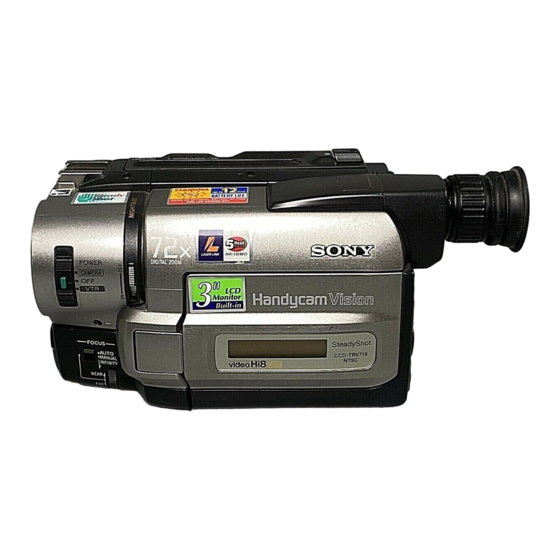
Sony CCD-TRV75 Operating Instructions (primary manual) Operating Instructions Manual
Video camera recorder video hi8 xr
Hide thumbs
Also See for CCD-TRV75 Operating Instructions (primary manual):
- Service manual (188 pages) ,
- Service manual (25 pages)
Table of Contents
Advertisement
Video Camera
Recorder
Operating Instructions
Before operating the unit, please read this manual thoroughly,
and retain it for future reference.
Owner's Record
The model and serial numbers are located on the bottom. Record the
serial number in the space provided below. Refer to these numbers
whenever you call upon your Sony dealer regarding this product.
Model No. CCD-TRV
Serial No.
CCD-TRV75/TRV85/TRV93/
TRV715/TRV815
©1998 by Sony Corporation
Model No. AC-L
Serial No.
CCD-TRV93
3-861-891-13 (1)
Advertisement
Table of Contents













Need help?
Do you have a question about the CCD-TRV75 Operating Instructions (primary manual) and is the answer not in the manual?
Questions and answers